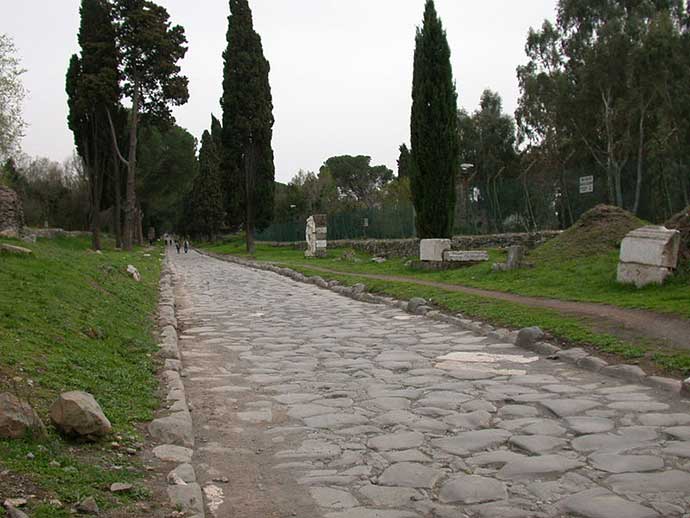

One of the Roman Empire’s greatest legacies was its roads. From the Firth of Forth in Scotland to inland North Africa remains of these iconic landmarks have survived to this day (in some cases even forming the basis for certain modern roads today).
These roads served a crucial purpose for the Roman Empire – one that helps explain not only how the Roman Empire grew so large, but also why it remained so powerful for so long.
This article is an edited transcript from Roman Legionaries with Simon Elliott, available on History Hit.
 Listen Now
Listen NowWhat is important about Roman roads?
Roman roads were very important for the Romans. For them, roads did much more than simply serve transport functions; they were a means of putting the stamp of the authority of Rome across a new territory and then maintaining that territory. A road to a Roman was like a map is to us.
If you look at how the British, in the 18th, 19th, and 20th centuries were mapping everywhere, they were doing so because it gave them control. For the Romans their same experience was building their roads.
Military constructions
All the roads of the Roman Empire were built by the Roman military. There was nobody else who could do it. So the Roman military employed specialists within the Roman units to actually do the work.
We have grown up today reading that the Roman military were jack-of-all-trades, carrying all sorts of bits of equipment – so much so that they were once nicknamed Marius’s Mules early in the Principate because they carried all the equipment. And one such piece of equipment was tools for constructing roads.

The Via Appia (Appian Way) in Rome. Credit: MM (Wikimedia Commons).
At the end of his marching day in enemy territory, the Roman legionary would build a marching camp everyday. This is great for archaeologists as it allows us to track a lot of the campaigns across Britain. But over and above the legionary, the Roman military units also had lots of specialists as well.
Specialist diversity
We can look for example at Paternus who writes about such specialists in the Roman military. They were called Immunes, which means they did not have to do normal legionary service.
All the Roman legionaries could do engineering work anyway and were expected to; but over and above that Paternus tells us that Roman military units also had specialists: ditch diggers, ferriers, pilots, master builders, shipwrights, ballista makers, glaziers, arrow makers, bow makers, smiths, copper smiths, helmet makers, wagon makers, roof tar makers, water engineers, sword cutlers, trumpet makers, horn makers, plumbers, blacksmiths, masons, wood cutters, lion burners, charcoal burners, butchers, henchmen, sacrificial animal keepers, grooms, and tanners.

View of the stone pavement of the Appian Way by Giovanni Battista Piranesi, 1756.
How did Romans build roads?
But over and above we can use a very specific example of building Roman roads. The first thing the Roman military would do when they were building a Roman road on behalf of the new governor or the procurator would be to use ‘agrimensores’ or land surveyors who did all the surveying using advanced equipment to lay out the route of the road.
‘Liberators’ or land levellers would then level the land that the road was going to be built on, followed by ‘Mensores’, or quantity measurers who would then measure out all the various quantities of the various stages of building the Roman road.
 Listen Now
Listen NowThe roads are only one example. Most of the stone-built infrastructure in the Principate in the Roman Empire in some way, shape, or form, especially public buildings and fortifications, would in some way, shape, or form have the inclusion of the Roman military in their construction.
Yet arguably, it is their role in creating the iconic Roman roads that epitomises the Roman army and construction.













